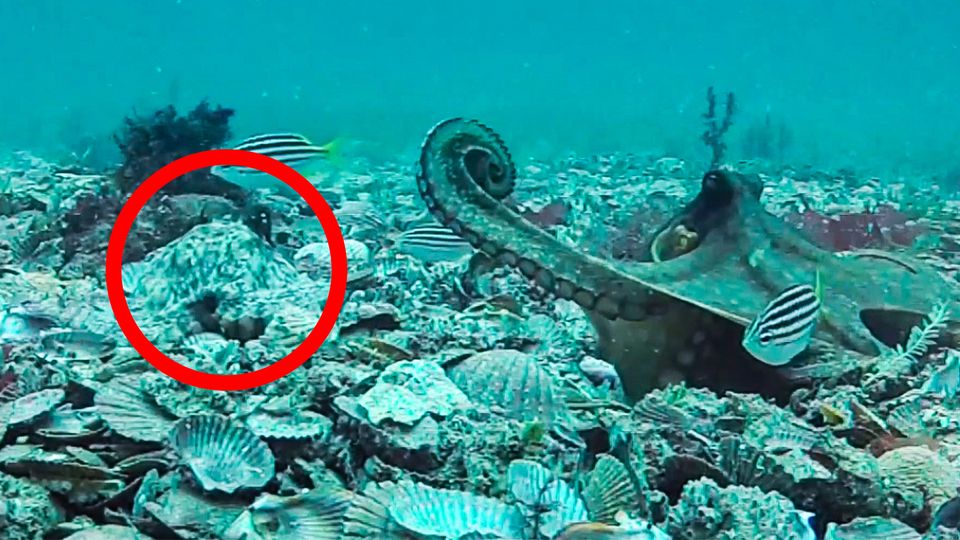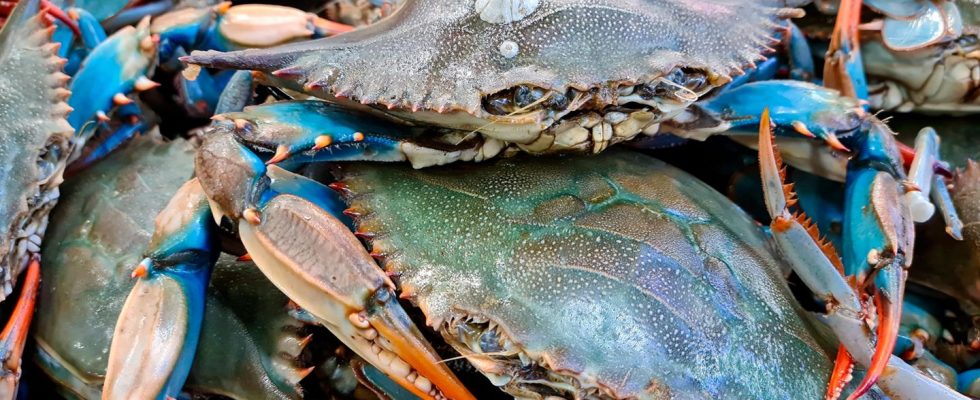Seafood at Risk
Italy declares war on blue crabs
The blue crab originally comes from the Atlantic coast of North and South America
©Getty Images
The blue crab has become a plague in Italian marine regions. Sometimes called the “killer of the seas,” the species threatens mussel production and, with it, popular seafood dishes. Now the shellfish itself should be on the menu.
The blue crab (Callinectes sapidus) originally comes from the Atlantic coast of North and South America. It was probably introduced into Japanese waters, the Mediterranean Sea and the North Sea via the ballast water of ships. In May, a first find was reported in the southern Baltic Sea, on Usedom. The animals owe their name to their striking blue coloration.
The species is already widespread in the Mediterranean. According to experts, it threatens native marine animals such as mussels and certain fish and has hardly any predators itself. Catching them is sometimes not easy either, as the animals can cut through fishing nets with their sharp claws.
Italy’s mussel production threatened
The Adriatic coast and the lagoon-like region in the northeast of the Mediterranean country are currently particularly affected. There are also numerous animals on the Tuscan coast. With the spread of the “sea killer,” as fishermen and politicians call the crab, Italy is concerned about its position as the world’s leading mussel producer. According to the Food and Agriculture Organization of the United Nations (FAO), Italy, China and South Korea produce the most mussels.
The Italian agricultural association Coldiretti warns that the turnover of small fishermen is in danger: “The phenomenon is indeed taking on the proportions of a natural disaster that is threatening the survival of the fishing industry in many regions.” According to the Ansa news agency, the Fedagripesca association estimates that by 2023 more than 50 percent of mussel production will be affected by the blue crab.
Among other things, clams and mussels are eaten – ingredients for popular dishes such as “Spaghetti alle vongole”, spaghetti with clams. On social media, people worry that such specialties could disappear from the menu.
Government decree against blue crabs
At the beginning of August there was a government decree. 2.9 million euros are to be invested in measures to prevent the spread of the crab species. This includes an approach that is as pragmatic as it is promising: the crab should end up on the plate itself. Blue crabs have long been caught on the US east coast, and they are also fished commercially in Greece.
According to media reports, fishermen affected by the shrimp plague on the Italian Adriatic coast have been supplying restaurants in the north-east of the country with the shrimp for some time. In addition to traditional dishes, they now also offer dishes with blue crab. Coldiretti published a list of recipes for restaurateurs: from blue crab with rosemary to crab salad and spaghetti with garlic and crab.

Government politicians are also promoting the use of blue crabs in domestic cuisine. Italy’s Agriculture Minister Francesco Lollobrigida, who is also Prime Minister Giorgia Meloni’s brother-in-law, recently shared a holiday photo of her on Facebook showing a plate of cooked blue crabs. “Today we’re eating blue crabs! Excellent,” he wrote. He also posted a video of himself holding a live blue crab and sharing its culinary benefits.
According to experts, it is not entirely clear why the shellfish is multiplying so much in the Mediterranean this summer. Coldiretti and other observers are convinced that the spread is due to climate change and warming water bodies.

